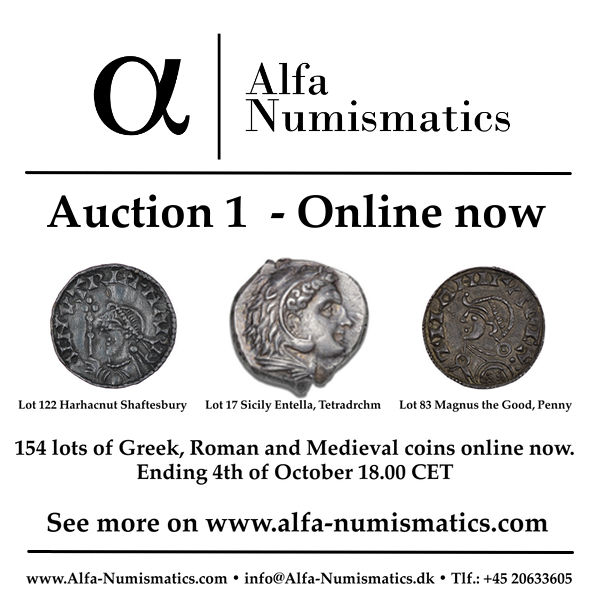
PREV ARTICLE
NEXT ARTICLE
FULL ISSUE
PREV FULL ISSUE
VOCABULARY TERM: MULTIPLE BLANKINGDick Johnson submitted this entry from his Encyclopedia of Coin and Medal Terminology. Thanks. -Editor Multiple Blanking. The process of producing several blanks with a single stroke of the blanking press. A multiblanking head is required with a matching plate containing the same number and pattern of openings as the number and pattern of blanking punches. Such multiple blanking is highly suitable for coin blanks of thin gauge metal and small size blanks, as under one inch diameter. The first multiple blanking had two blanking heads, and was called dual blanking. History has not recorded who developed this concept, but we do know that multiple blanking was done at the Royal Mint London by 1888. It was blanking silver shillings two at a time, and copper blanks – farthings and halfpence – five at a time. As blanking presses developed, and became more powerful, additional blanking heads were added (with corresponding apertures in the blanking plate). The most modern multiple blanking presses can blank as many as thirty blanks with each cycle of the press. Wider strip is required and an elaborate blanking pattern is used. The advantage of multiple blanking is two fold: it lowers the cost of the blanks and slightly more blanks can be cut out of the strip (leaving as little as 30% to 35% unblanked, as skeleton scrap). Multiple blanking can create a number of errors from imperfect advancement of the rolled strip. Also portions of the skeleton scrap have been inadvertently struck, these mint errors are unusual shape. The most dramatic of such is the BOW TIE, struck on a piece of scissel from the metal formed between two dual blanking dies. `Leonardo da Vinci's drawing (circa 1500) for a proposed press had, in effect, a blanking and a striking press back-to-back. Perhaps it could also do double blanking on the same strip (since these were completely separate of one another da Vinci could be credited with the concept, despite the fact there is no record this press was ever built). See blanking. As far as I know, this is still a standard part of the coin-making process around the world today. So much so that it's very hard to imagine a world where coin blanks were cut individually. The historical perspective is important - everything we do or use today was discovered or invented by people in the past trying to do their jobs better/faster/cheaper. -Editor
To read Dick's related earlier E-Sylum article, see:
Looking for the meaning of a numismatic word, or the description of a term? Try the Newman Numismatic Portal's Numismatic Dictionary at: https://nnp.wustl.edu/library/dictionary Or if you would like a printed copy of the complete Encyclopedia, it is available. There are 1,854 terms, on 678 pages, in The Encyclopedia of Coin and Medal Technology. Even running two a week would require more than 19 years to publish them all. If you would like an advance draft of this vital reference work it may be obtained from the author for your check of $50 sent postpaid. Dick Johnson, 139 Thompson Drive, Torrington, CT 06790. 
Wayne Homren, Editor The Numismatic Bibliomania Society is a non-profit organization promoting numismatic literature. See our web site at coinbooks.org. To submit items for publication in The E-Sylum, write to the Editor at this address: whomren@gmail.com To subscribe go to: https://my.binhost.com/lists/listinfo/esylum All Rights Reserved. NBS Home Page Contact the NBS webmaster 
|